Growing tomatoes from scratch is a lengthy process requiring transplanting the seedlings to allow the plants to grow healthy roots. We've looked into this topic, and in this post, we will be sharing with you tips on when you should transplant your tomato seedling and how to successfully plant them in your garden.
Transplanting tomato seedlings happens in two stages: repotting into larger containers and transplanting them into the garden. If you started your seedlings from germinating seeds, you would need to transplant them in early spring, about 6 to 8 weeks before the last frost. Moving them to the garden will happen in a few months when it's warmer, between April and July.
We know that transplanting tomatoes can be quite confusing, especially since it needs to follow quite a few stages. In this post, we will share with you all the information you need to know about transplanting tomato seedlings. Keep reading as we also share with you the best practices for growing tomatoes and how you'll get a full harvest each time.
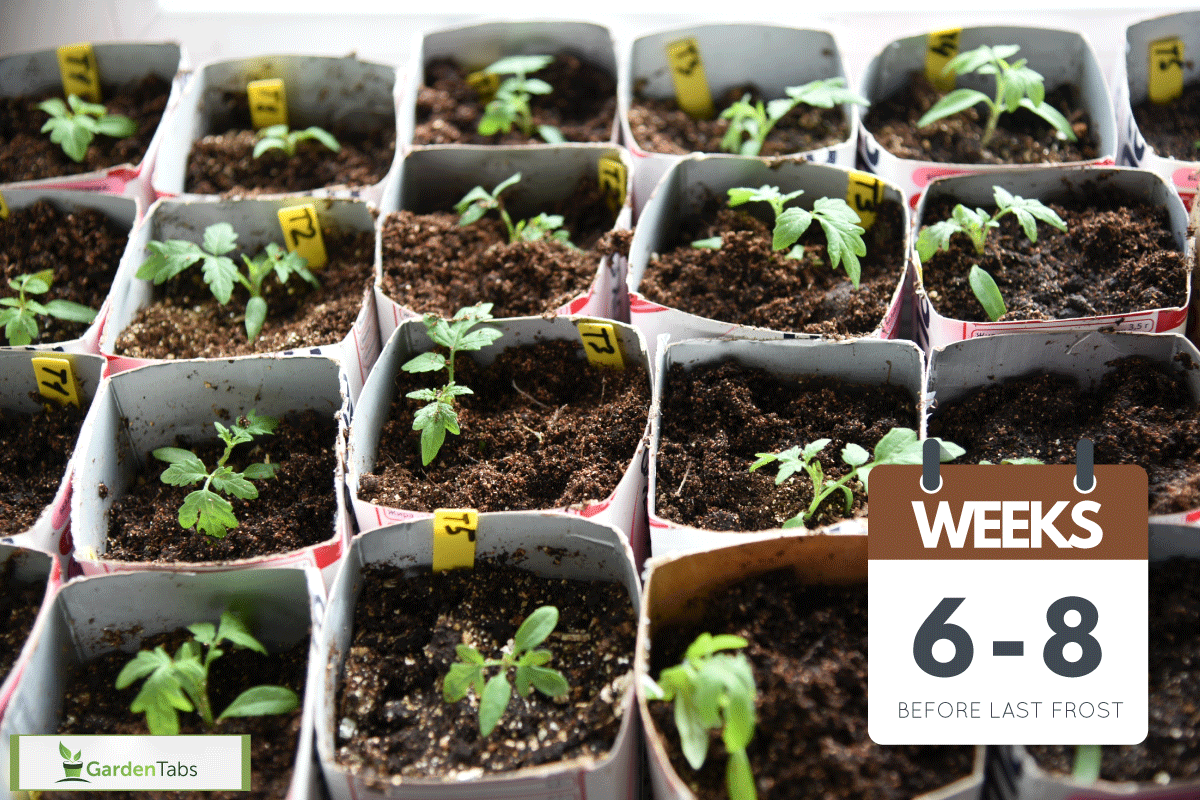
When To Transplant Tomato Seedlings
Tomatoes are one of the many garden plants that do better with transplanting. These plants are more mature and a lot stronger than plants that grow from direct seeding.
For tomato plants, transplanting them into larger containers before moving them outside in the garden helps develop their roots. They need constant transplanting because tomato roots need a lot of room to grow; otherwise, they will become rootbound and die.
Transplanting the tomato seedlings also allows the roots to grow downwards and gather more nutrients from the soil for better growth. Tomato plants that are transplanted grow more roots each time they move pots, and this gives the plant a more robust and resilient root system.
Tomato plant transplanting happens in two stages: first, you have to transplant the germinated seedlings into a larger container. During this time, you will most likely replant your tomatoes at least two or three times more before moving to the next step. After helping the plants grow and mature in the container, it is time for them to be replanted outside the garden.
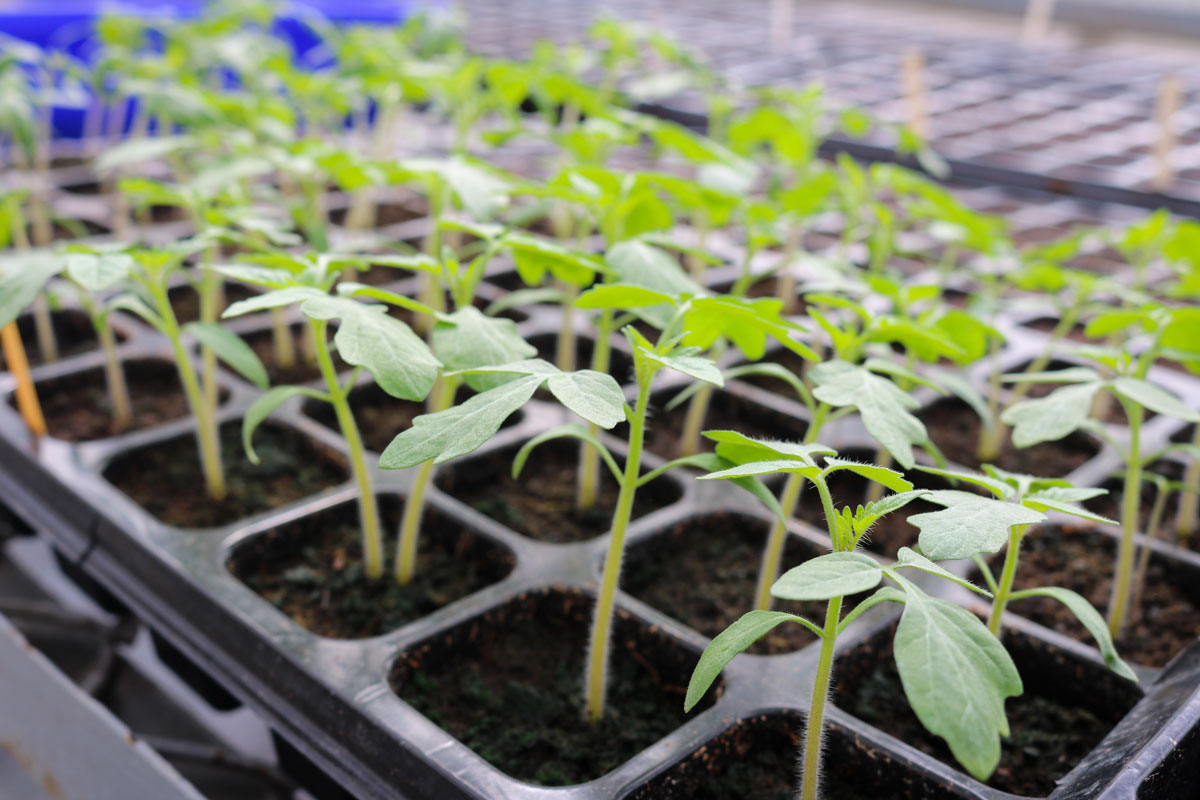
The first transplant of the tomato seedlings typically happens during early spring, about six to eight weeks before the last frost date. During this time, you must prepare to repot your tomato seedlings at least two or three times within the period to allow the stems and roots to develop and grow.
There is a progression to which tomato plants will do well before their final replanting stage. If you're starting out with seeds, you will most likely use seed starting pots or soil blocks. After the seed has germinated and grown, you can transplant them to four-inch pots and once again into one-gallon pots. The final stage is when the tomatoes have to be planted on the ground.
Check out this seed starting pot on Amazon.
The tomato plants should be ready to move out in the garden should happen between April and July, when the soil temperature is about 50°F. By this time, your seedlings would've grown to about five to 10 inches tall, and the risk of frost should have passed before you attempted to plant them outside.
Before you transplant your tomato plants outside in the garden, you should harden your tomatoes before permanently planting them in their final growing area. Tomato plants need to acclimatize before they stay outside permanently. For about a week or two before final replanting, allow the seedlings to adjust to outside temperatures and other weather conditions.
When you've decided on the final location to put your tomato plants in, make sure that they receive a lot of sunlight and that the soil has excellent drainage. Rotate your tomato plants by not planting them in an area where you previously planted your tomatoes to prevent them from getting infections from tomato disease pathogens.
Do Tomatoes Grow Better In Pots Or On The Ground?
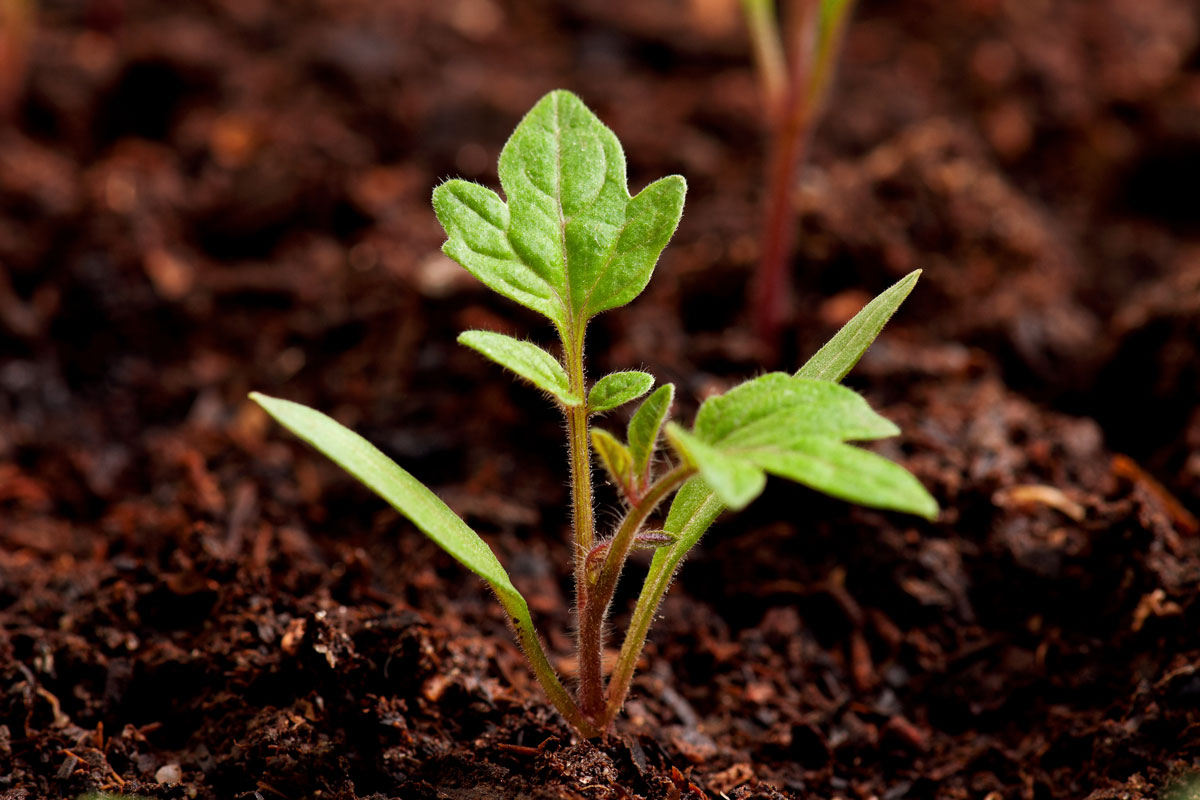
Generally speaking, tomatoes grow better if they are planted in soil that is loose and rich in nutrients and you can do this in containers or on the ground. However, there are different varieties of tomatoes that you can plant and some of them do well in container gardens, while others are better left outside on the ground.
Microdwarf varieties and bush varieties of tomatoes can grow well in containers sized at around three to eight gallons. Indeterminate tomato varieties that have a bigger, more extensive root system need a lot of space, so they need to be planted directly into the ground.
Tomato plants that are planted in containers need to be watered more frequently than plants planted directly into the ground. This is because tomatoes do not do well with dry soil, and they are very susceptible to blossom end rot, which can cause the plant to die.
For tomato plants that are both planted in containers and on the ground, fertilization and composting are important during the season. This will give the plants the extra boost they need since tomatoes gather more nutrients from the soil.
Do Tomatoes Need Full Sun?
Tomato plants love the sun. Container and tomato plants in the garden require direct sunlight for about six to eight hours each day. If you are just about to replant your tomatoes to a different area, make sure that the location of your plants will be receiving enough light. You can check this by using a sunlight meter to see if the area will get adequate sun throughout the day.
Get this soil tester and sunlight meter from Amazon.
How Much Water Do Tomato Plants Need?
Generally speaking, tomato plants planted in the ground require about one to two inches of water per week. Well-developed tomato roots grow downwards as they seek more water. If your tomato plants are newly planted outside in the garden, keep the plants moist but not overly wet.
However, if you are growing your tomatoes in containers, your tomato plants will need extra watering. The soil in the containers tends to heat up faster and dry out and leaving the tomatoes in this condition often causes plant death.
A good rule of thumb for container tomato plants is to allow water to drain out of the bottom of the pot when you water them in the morning. Check the soil moisture in the afternoon and if the soil feels dry one inch below the surface, you'll have to water them again.
Best Tips For Growing Tomatoes
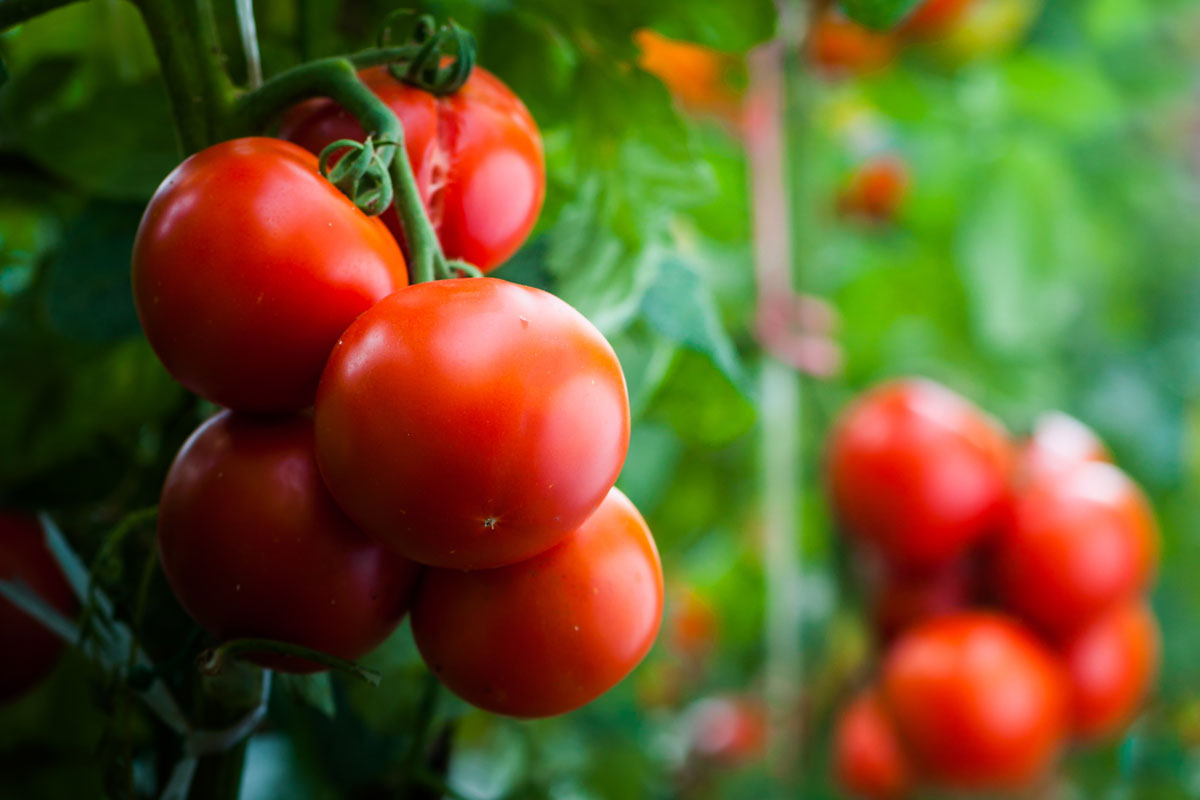
Now that we've covered transplanting the tomato seedlings into either bigger containers or outside in the garden, you might be wondering if there are other practices that you can do to ensure a healthy tomato plant. Here are some tips that will help you grow them to reach their full potential.
Turn on the Fan
To help your tomato plants grow and develop stronger stems, they need to sway and move in the breeze. If your plants are outside, this wouldn't be a problem as it naturally occurs. However, indoor seedlings and container tomatoes might need a little extra help.
Turn on the fan and allow the air to circulate for about five to 10 minutes every day to help the stems develop. Otherwise, you can also run your hand across the top of your plants to ruffle them every morning for a few minutes.
Preheat the Soil
Get the soil you'll be transplanting your tomatoes warm by covering the soil with black or red plastic a few weeks before your intended planting date. The heat will be retained in the soil, and this will help your transplanted tomato plants grow better.
Bury the Stems
When transplanting your seedlings, make sure to bury them deeper than you've planted them in their containers. You can plant them up until the top leaves of the seedlings. This allows the tomato plants to grow more roots along their stems, which makes for a stronger plant.
Pinch and Prune
If you see that there are little suckers that grow between the crotch of the two bigger branches, pinch and prune them out. These little extras often take the energy away from the plant, so taking them off will result in a better yield.
Final Thoughts
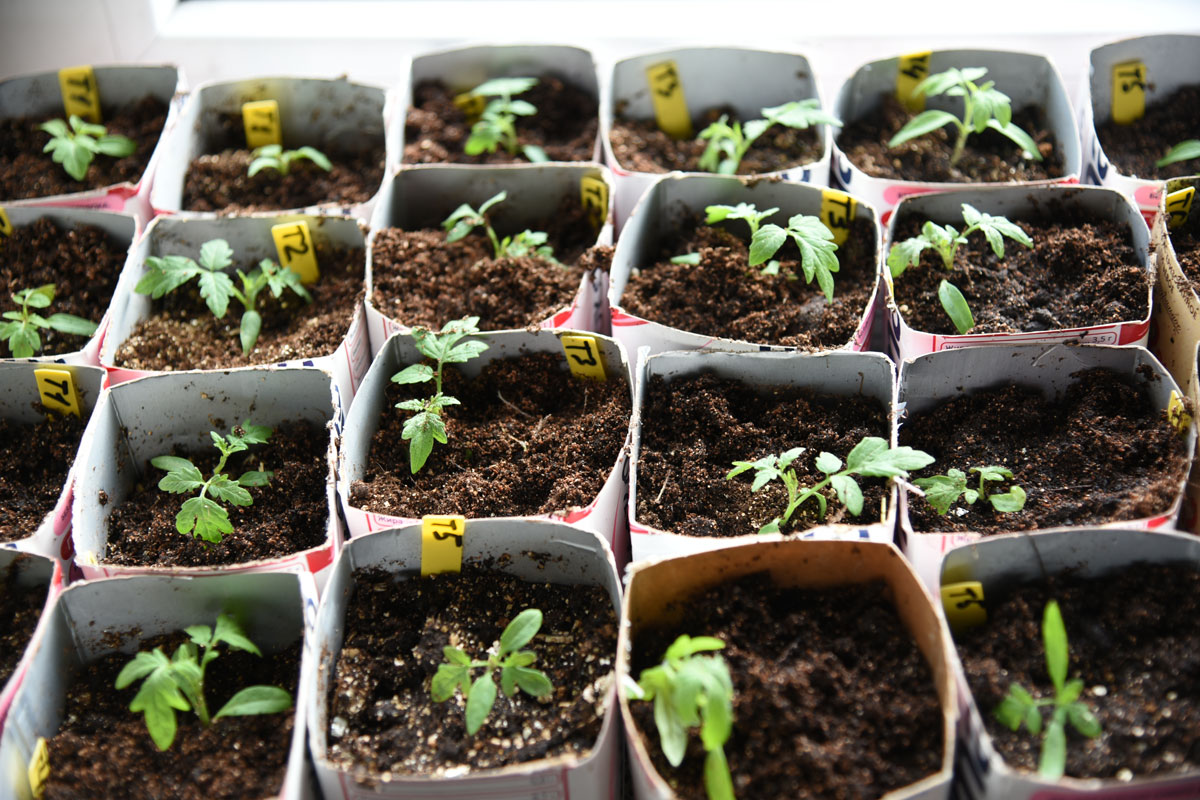
Planting tomatoes isn't quite as simple as just leaving them on the ground to grow. It requires a lot of dedication and effort, but the end result is quite a rich harvest. Keep it simple by maintaining the schedule in growing your tomato plants and following the timeline, and you'll have healthy and strong tomatoes that will reap great fruit at the end of the season.
Would you like to learn more about growing your own tomato plants? We've got the perfect articles just for you:
How To Grow Tomatoes In A Vertical Garden
How To Grow Tomatoes On A Balcony


